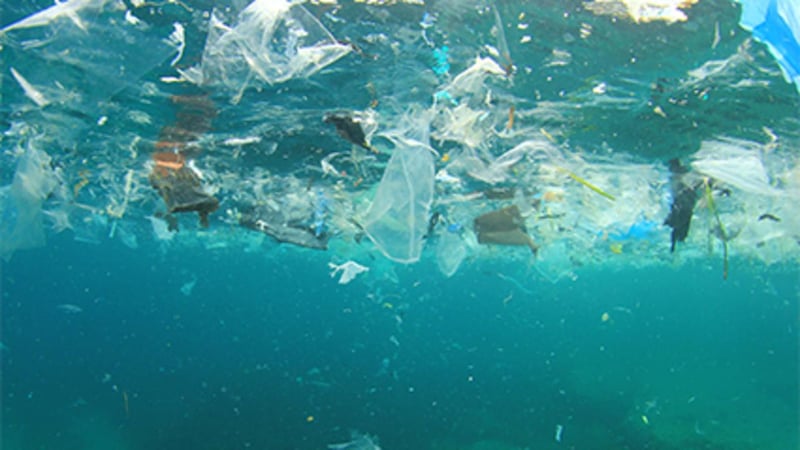Patient Resources
Get Healthy!
Dangerous Germs Floating on Microplastics in Ocean Wind Up in Food, Water
- April 29, 2022
- Robert Preidt
- HealthDay Reporter

Land parasites that pose a risk to human and wildlife health can hitch rides on the millions of pounds of microplastics that float between oceans, a new study shows.
"It's easy for people to dismiss plastic problems as something that doesn't matter for them, like, 'I'm not a turtle in the ocean; I won't choke on this thing,'" said corresponding author Karen Shapiro. She is an infectious disease expert and associate professor in the School of Veterinary Medicine at the University of California, Davis.
"But once you start talking about disease and health, there's more power to implement change," she said in a university news release. "Microplastics can actually move germs around, and these germs end up in our water and our food."
Microplastics - no bigger than a grain of rice - have contaminated waters as remote as in Antarctica.
This study found that three disease-causing parasites from the land can hitchhike on microplastics to reach oceans and end up in places they'd normally never be found.
The three parasites are Toxoplasma gondii, Cryptosporidium (Crypto) and Giardia, which can infect both humans and animals.
T. gondii - a parasite found only in cat feces - has infected many ocean species with the disease toxoplasmosis. It's been linked to the deaths of sea otter and critically endangered wildlife, including Hector's dolphins and Hawaiian monk seals. In people, toxoplasmosis can cause lifelong illnesses and developmental and reproductive disorders.
Crypto and Giardia cause gastrointestinal disease and can be deadly in young children and people with weakened immune systems, the study authors said.
For the study, the researchers conducted lab experiments to assess whether the parasites stay attached to two types of microplastics in sea water: polyethylene microbeads (often found in cosmetics such as exfoliants and cleansers), and polyester microfibers (found in clothing and fishing nets).
The parasites clung better to microfibers than to microbeads, but both can carry the parasites, according to the study published online April 26 in the journal Scientific Reports.
While microplastics that float on the ocean surface can travel long distances, those that sink may concentrate the parasites near the bottom of the sea where filter-feeding animals like zooplankton, clams, mussels, oysters, abalone and other shellfish live.
"This work demonstrates the importance of preventing sources of microplastics to our oceans," said study co-author Chelsea Rochman, a plastic-pollution expert and assistant professor of ecology at the University of Toronto. "Mitigation strategies include filters on washing machines, filters on dryers, bio-retention cells or other technologies to treat stormwater, and best management practices to prevent microplastic release from plastic industries and construction sites."
More information
There's more on microplastics at the National Geographic Society.
SOURCE: University of California, Davis, news release, April 26, 2022

